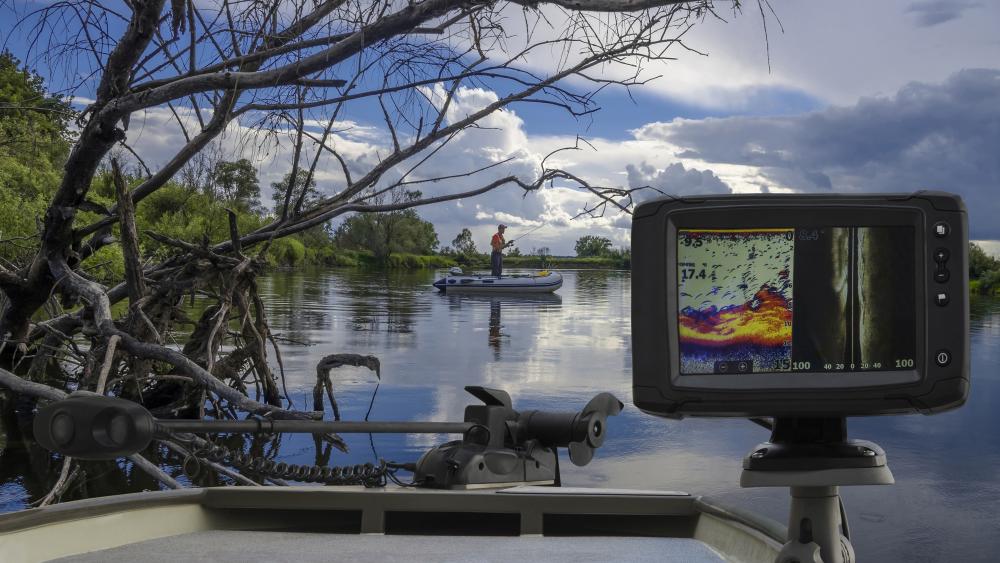
Fishfinders make it easier for anglers to locate fish. I Photo: Shutterstock, 761533963
What was once practiced with bamboo rods and braided horsehair lines is now characterized by precision-engineered reels, ultra-sensitive graphite composite rods, chemically sharpened hooks, fishing lines without stretch for better bite detection, lifelike imitation fish for predator fishing, underwater cameras, state-of-the-art echo sounders, drones, and fishing apps that allow anglers to quickly share their experiences and successes with others.
Being at one with nature – and technology
"Modern anglers and their electronics function like a networked system that can track, attract and catch fish with increasing efficiency. These innovations may seem positive from the angler's perspective, but they are challenging for fisheries managers and policymakers trying to keep up with change," notes first author and fisheries professor Steven Cooke of Carleton University in Canada.
Steven Cooke and German fisheries professor Robert Arlinghaus have dedicated their research to the environmental and social aspects of recreational fishing. As part of an international team, the two researchers conducted a comprehensive literature review of the past and future of innovations in recreational fisheries. The study also incorporated extensive practical experience, as scientific knowledge is not yet available on many aspects.
New methods offer opportunities and conflicts
"Some of the achievements can benefit fish by reducing injuries, stress and mortality of undersized fish that are put back, or they ensure that only certain species or sizes end up on the hook and it is no longer swallowed deep," explains Robert Arlinghaus. "However, technical innovations can also change the entire way angling works, fuel conflicts between angler groups and other stakeholder groups, increase inequality in anglers’ catches, and violate established moral principles. So there are two sides to this," adds the fisheries expert.
Technical innovations can be a risk for fish stocks
The example of modern echo sounders shows that technical innovations that benefit anglers can also pose risks to fish stocks. Steven Cooke: "Modern echo sounders act as an extension of the angler's arm. They can be used to precisely locate individual fish in open water and target individual large fish. Depending on how many adopt the technology, fishing pressure can ris, especially on the rare larger predatory fish.” In combination with sophisticated GPS and boat technology, the possibility of quickly finding good fishing spots again or communicating them to other anglers also improves. In extreme cases, this can lead to local overfishing.
Fishing rights in German inland waters are often in the hands of angling clubs. When conflicts arise or out of fear of overfishing, they usually regulate the use of new techniques themselves via the respective fishery regulations – usually purely on gut instinct as research is typically lacking.
There is often a lack of data that can be used to objectively deduce how new methods work. The researchers suggest systematically investigating the effects of modern technologies. "We hope this research will lead to increased and better monitoring of technological innovation and engagement by those who manage the recreational fishing sector. This will ensure that management actions related to new and evolving technologies in recreational fisheries are proactive rather than reactive," Robert Arlinghaus concludes.
A detailed example to illustrate technical innovations in recreational fishing: predator fishing with real-time images from the water body
To illustrate, here is an example that does not correspond to the average angler, but shows the technical aids that some anglers use to pursue their hobby: A black bass angler sits in his boat at the dock in a comfortable chair behind the steering wheel and digital maps displayed on a touch-screen chart plotter. This also provides information on environmental conditions such as water temperature and barometric pressure, which the experienced angler can use to predict the habitats of the fish. When fish appear on the screen, the drive switches to a bow-mounted electric motor equipped with a sonar transducer and screen. The angler sets the GPS-equipped electric motor to automatically and quietly travel a specific path to the fishing site to minimise disturbance to the fish, or keeps the boat precisely above the located fish. Meanwhile, the angler fishes and is informed via real-time digital images of the lake structure and fish locations in three dimensions below the boat. Depending on the sophistication of the chart plotter, the angler can use all this information to digitally map the area and use this information in the future to increase fishing efficiency. Whether this actually increases catch rates is an unresolved scientific question, but first research from the USA has shown that modern bass anglers are more efficient than anglers in the 1960s or 1970s.





